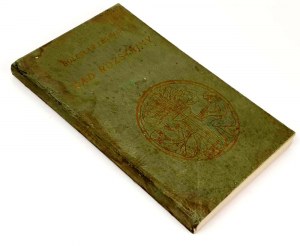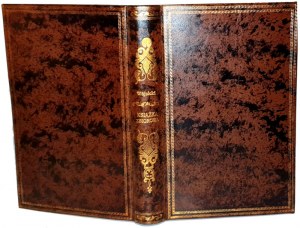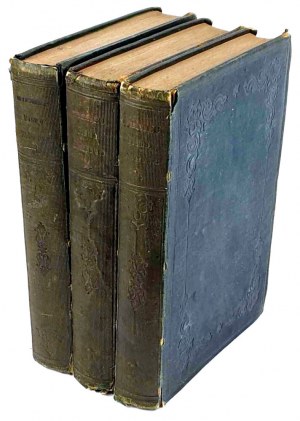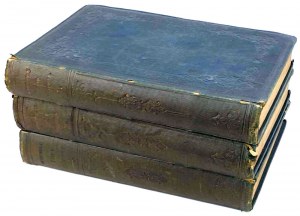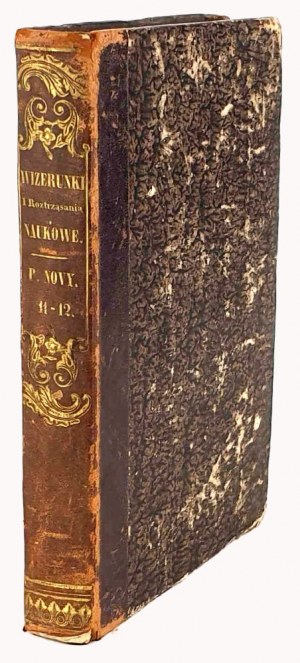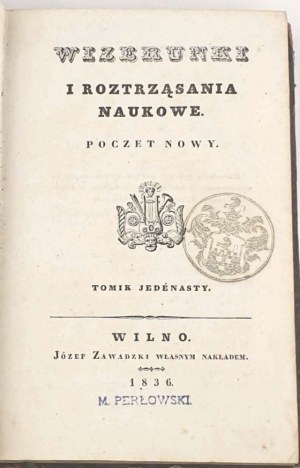SKAMANDER - one of the most important literary magazines of the interwar period. It was published irregularly from 1920 until the outbreak of World War II.
"Skamander: A Poetry Monthly" - a Polish literary magazine based in Warsaw, which was published in 1920-1928, and then 1935-1939. It was originally published by Wladyslaw Zawistowski, and from 1922 by Mieczyslaw Grydzewski.
Virtually every issue featuredfirst editions of works by, among others, Tuwim, Iwaszkiewicz, Wierzyński, Slonimski, Lechoń, Pawlikowska Jasnorzewska, and a few by Bruno Schulz, Witold Gombrowicz and others.
The core of the editorial team consisted of five leading poets of the Skamander group: Jaroslaw Iwaszkiewicz, Jan Lechoń, Antoni Slonimski, Julian Tuwim and Kazimierz Wierzynski. Transitionally, it also included Karol Irzykowski and Juliusz Kaden-Bandrowski, among others. The title of the magazine took, like the name of the literary group, from the mythological river flowing around Troy. At the same time, however, it is an allusion to a quote from Stanisław Wyspiański's Akropolis: "Skamander shines, with the Vistula river's luminous wave." In the early days, the magazine's profile was closely linked to the activities of the Skamandrites - it was their tribune, appearing in opposition to other literary groups of the period. The situation changed after 1935, when the works of artists not previously included, such as Bolesław Leśmian and the Żagarists, began to be presented much more widely in the magazine. "Skamander" published critical-literary texts, essays and reviews - also in the fields of theater, visual arts, music and film. After 1935, more space was also devoted to historical-literary texts and literary theory (e.g. by Franciszek Siedlecki and K. W. Zawodziński). The magazine, despite the fact that it was a monthly poetry magazine by name, also devoted a lot of attention to prose and drama; it printed, for example, Bruno Schulz's Sanatorium Under the Sign of the Hourglass and Witold Gombrowicz's Yvonne, Princess of Burgundy in fragments. Numerous translations were also published, including French and Russian symbolists."
Almost complete, out of 110 issues only one is missing (No. 75), in nine volumes. Bound 7 volumes. Two volumes remain to be bound, including one where a notebook is missing. Almost all publisher's covers have been preserved. An uncommon set.
Binding contemporary, unified, in linen with red embossing.
Volume 1 1920
Volume 1: the cover of T. Gronowski No. 1 of 1920 is missing - there is a one-sided copy, so the table of contents which should be on the other side of the cover is missing. There is instead, at the end of the notebook, a table of contents of the first three notebooks. Ownership stamp on the title page. Unprofessionally repaired one card. Among other things: "Introduction to pure form in theater. Analogy with painting" Stanislaw Ignacy Witkiewicz, Julian Tuwim "Flecista" - first printing, Good condition.
notebook 2: cover by Z. Pronaszko, ownership stamp on title page. Among other things: "Introduction to pure form in theater. Analogy with painting" Stanislaw Ignacy Witkiewicz Very good condition .
notebook 3: cover by Antoni Slonimski, ownership stamp on title page, M.in.: "Introduction to pure form in theater. Analogy with painting, Theater and poetry, On a new type of theatrical art" Stanislaw Ignacy Witkiewicz, Very good condition
Volume 2 1921
notebook 4: cover by Tadeusz Gronowski,
notebook 5-6: cover by Tadeusz Gronowski, Among others: first printing by Jan Lechoń Jan Potocki, variant for act III of "Wyzwolenie" by Stanisław Wyspiański,
notebook 7-8-9: cover by Tadeusz Gronowski, Among others: "Narcissus" by Ovid translated by Julian Ejsmond, Antoni Slonimski Negative,
notebook 10-11-12-13: cover by Waclaw Borowski, M.A.: Stanislaw Ignacy Witkiewicz, missing pages 328-340 with a piece by Jaroslaw Iwaszkiewicz, Seven Rich Cities of the Immortal Church - cut from the volume after the binding.
Notebook 14-15: cover by Tadeusz Gronowski,
Volume 3 1922
notebook 16: cover by Waclaw Borowski, ownership stamp on title page
notebook 17: cover by Waclaw Borowski, ownership stamp on title page
notebook 18: cover by Roman Kramsztyk, ownership stamp on title page, M.in.: review by Zofia Stryjeńska of "Native Art" exhibition
notebook 19: no cover, ownership stamp on title page, General Barcz fragment of Juliusz Kaden-Bandrowski's novel,
notebook 20-21: cover by Waclaw Borowski, ownership stamp on title page. Among others: FIRST PRINT of poem and DEBUT by Maria née Kossak Pawlikowska [Maria Pawlikowska-Jasnorzewska] "Who wants me to love him".
notebook 22-23-24: cover by Tadeusz Gronowski, ownership stamp on title page. M.im.: Irena Tuwim, Maria née Kossak Pawlikowska,
notebook 25-26: cover by Zygmunt Kaminski, ownership stamp on title page. Among others: Anatol Stern, Józef Wittlin, Mieczysław Treter
notebook 27: cover by Waclaw Borowski, Among others: Adam Ważyk, Aleksander Wat, Carpenters - the literary debut of Julian Przyboś, the first printing of the poem "Dziadzio" [about Juliusz Kossak] by Maria née Kossak Pawlikowska.
Volume 4 1923-1925
1923
Issue 28: cover by Zygmunt Kaminski, Among others: Karol Szymanowski,
notebook 29-30: cover by Tadeusz Gronowski, Among others: Max Jacob and Guillaume Apollinaire
notebook 31-33: cover by Zygmunt Kaminski, Among others: Julian Tuwim To Maria Pawlikowska
1924
notebook 34-36: cover by Tadeusz Gronowski, Wladyslaw Broniewski's literary debut "Youth", "Windmills"
1925
notebook 37: cover of Emil Lindeman? The same cover in subsequent issues is described as Tadeusz Gronowski. Among others: Witkacy
notebook 38: cover by Tadeusz Gronowski (previously described as Emil Lindeman).
notebook 39: cover by Tadeusz Gronowski (previously described as Emil Lindeman). Stanislaw Ignacy Witkiewicz "The Madman and the Nun" - first printing? piece written on January 7, 1923.
notebook 40: cover by Tadeusz Gronowski, first printing of the work "Creator" by Maria Pawlikowska
notebook 41: cover by Jerzy Gelbard, literary debut: Mieczyslaw Jastrun "The Big Car"
notebook 42: cover by Tadeusz Gronowski,
Volume 5 1926-1928
1926
notebook 43: cover without author, among others: debut of Jan Brzechwa "Radio-concert"
notebook 44-46: cover by Tadeusz Gronowski, Wladyslaw Sterling
notebook 47-48: cover by Janina Konarska, among others: "Jew eternal wanderer" by Aleksander Wat
1927
notebook 49: cover by Janina Konarska, among others: Leopold Staff, Maria Kuncewiczowa, first edition by Konstanty Galczynski
notebook 50-54: cover by Janina Konarska,
notebook 55: cover by Władysław Daszewski, Kazimiera Iłłakowiczówna,
1928
notebook 56: cover by Wladyslaw Daszewski,
Volume 6
1935
notebook 57: cover by Janina Konarska, boards by Zdzislaw Czermanski, drawings by Feliks Topolski. Among others: Jerzy Stempowski, Bolesław Leśmian, Józef Łobodowski, Marian Hemar and others.
Notebook 58: cover by Antoni Wajwód, drawings by Feliks Topolski. Among others: "The Book" by Bruno Schulz (excerpt from Cinnamon Shops), Pawel Hertz, Czeslaw Milosz.
notebook 59: cover by Tadeusz Lipski, boards by Rafal Malczewski, drawings by Feliks Topolski, among others: "Fever" by Emil Zegadłowicz,
notebook 60: cover by Irena Kuczborska, drawings by Feliks Topolski, series of 12 photographs Window - Levitt-Him layout. among others: first printing of "Ferdydurke" by Witold Gombrowicz - fragment,
notebook 61: cover by Marek Zulawski, boards by Kisling, drawings by Feliks Topolski.
notebook 62: cover by Eugenia Różanska, drawings and boards by Feliks Topolski, among others: "People of wax" Ewa Szelburg-Zarembina - first printing
notebook 63: cover by Jadwiga Gladkowna, boards by Zofia Stryjeńska,
notebook 64: cover by Antoni Wajwód, boards by Zdzislaw Czermanski, among others: "The statue of the spouses" by Czeslaw Milosz
Vol. 65: cover by Antoni Wajwód, boards by Tadeusz Kulisiewicz, among others: Jan Kott
Volume 7 1936
notebook 66: cover by Jadwiga Hładkówna, boards by Frans Masereel
notebook 67: cover by Levitt-Him, boards by Zygmunt Dunin
notebook 68-69: cover by Maria Obrębska, boards by Roman Kramsztyk
notebook 70: cover missing. boards by Feliks Topolski
notebook 71-73: cover by Edward Manteuffel, boards by Jozef Raynefeld, among others: Boleslaw Leśmian, "On the aesthetics of Croce" by Renato Poggioli
notebook 74: cover by Maciej Nowicki and Stanisława Sandecka, Horace "To the patron" translated by Julian Tuwim, Spring by Bruno Schulz
notebook 75 none
notebook 76: cover by Włodzimierz Padlewski, among others: "The origins of myth" by Jeremi Wasiutyński, "What did Conrad believe?". Witold Turno
notebook 77: cover by Eugenia Różanska, among others: "Wyspianski's Antagonist" by Zygmunt Łotocki.
Volume 8 1937
notebook 78-80: cover by Antoni Wajwód,
notebook 81-83: cover by Levitt-Him,
notebook 84-86: cover by Maria Obrebska
notebook 87-89: cover by Janina Jankowska, among others: first printing of "Ball at the Opera" excerpt by Julian Tuwim , first printing of "On the Kitchen Stairs" by Witold Gombrowicz, "Evening" by Jan Brzechwa, "Beginning of April" by Stanislaw Jerzy Lec.
Volume 9 1938-1939
1938
Notebook 90-92: cover by Jozef Raynefeld, min: Maria Pawlikowska Jasnorzewska, "Tiger Skin" by Shot Rustaveli in translation by Julian Tuwim
notebook 93-95: cover by Edward Manteuffel. "Fragments from Safona" by Maria Pawlikowska Jasnorzewska, First printing of "Yvonne Princess of Burgundy. Act One and Act Two" by Witold Gombrowicz
notebook 96-98: cover by Jadwiga Hładkówna, among others: First printing of "Iwona księżniczka Burgunda. Act Three and Four" by Witold Gombrowicz, enthusiastic review of "Ferdydurke" by Bruno Schulz
notebook 99-101: cover by Antoni Wajwód, among others: "Two Romantic Worlds. On Bruno Schulz and Witold Gombrowicz". Henryk Vogler
notebook 102-104: cover by Janusz Woźniakowski, among others: "Nike" by Antoni Slonimski, Pawel Hertz,
notebook 105-107: cover by Tadeusz Lipski, among others: first printing of the short story "The Rat" by Witold Gombrowicz, "Venice" by Aleksander Janta-Polczynski,
notebook 108- 110: cover by Jadwiga Gladki, "Nalkowska against the background of her new novel" by Bruno Schulz, "In the centenary of the Parma Hermitage" by Jan Kott,
is the last notebook of Skamander July-September 1939.



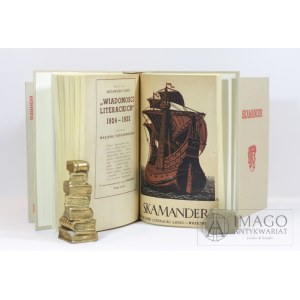

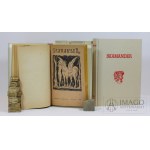
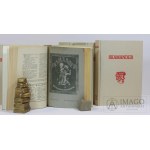
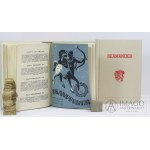
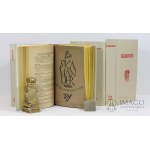
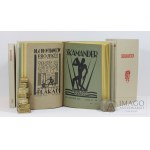
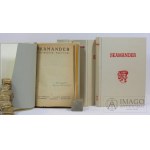



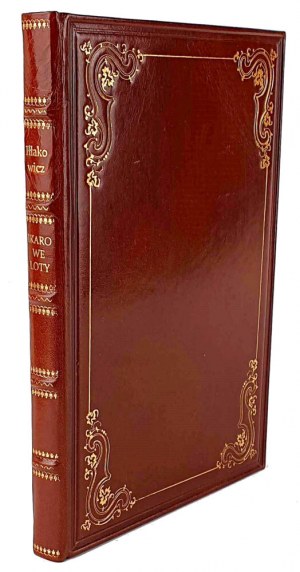

![TYRMAND Leopold - Hotel Ansgar - Poznań 1947 - [debut].](https://img1.one.bid/img/6265/1861236_1x.jpg?1713132000)
![TYRMAND Leopold - Hotel Ansgar - Poznań 1947 - [debut].](https://img1.one.bid/img/6265/1861236_2x.jpg?1713132000)
